Ergonomics is the study of people in their working environment. The goal of ergonomics is to prevent injuries and musculoskeletal disorders (MSDs) caused by lifting, bending, working in awkward body positions and performing repetitive motions and tasks.
Have you ever been hunched over your computer so long that when you finally get up, you throw your back out? And you’re basically out of commission for the rest of the day? You try propping yourself up in bed with your laptop, but it’s horribly uncomfortable, and every tap on your keyboard shoots a sharp pain up your spine.
Don’t let that happen! Practice healthy habits, and improve your workspace ergonomics.

“In the midst of the COVID-19 pandemic, more of us are working from home, which means we’re more susceptible to neck and back pain,” said Brian Norton, director of assistive technology at Easterseals Crossroads. “Our bodies are made to move, so being stationary for long periods of time can be a challenge. We’re used to slouching, especially because we find ourselves leaning over and looking at our phones in our laps so much these days, but that puts a lot of strain on our necks. Now, more than ever, it’s important to practice proper posture and positioning.”
Proper Home Office Ergonomics
A workspace using ergonomics fits a job to a person’s needs — increasing efficiency and productivity and reducing discomfort.
How you position yourself in front of your computer is important. Make sure the top of your monitor screen is slightly below eye level. Sit up straight and centered in front of the monitor and keyboard. Keep your forearms level or tilted up slightly. Your wrists should hover rather than rest while you are typing. Position your legs at a horizontal, 90-degree angle with your feet resting flat on the floor or a footrest.
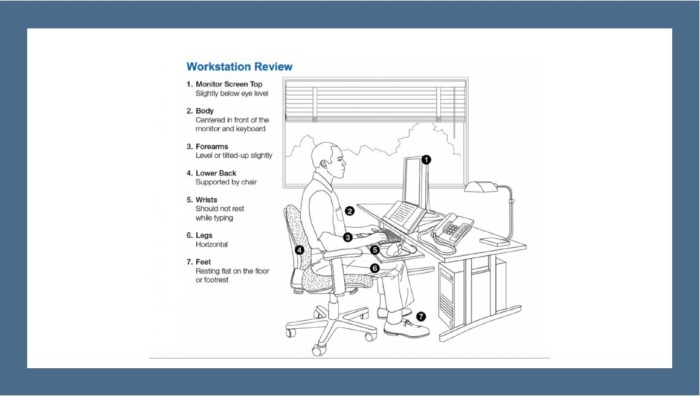
This may sound demanding, but these guidelines are worth following, and before you know it, you’ll make a habit of proper posture and positioning. Here are some further dos and don’ts to follow at home.
Dos and Don’ts for Workspace Ergonomics
1. Do alternate between sitting and standing as much as possible. Don’t sit or stand for long periods of time without interruption.
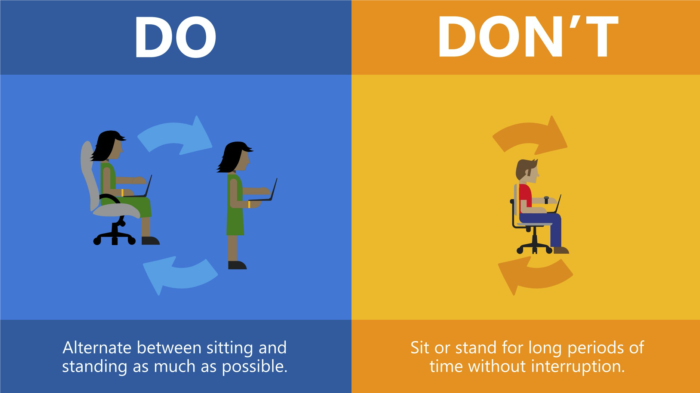
2. Do sit toward the front of your chair so your back doesn’t rest on any part of the chair back. Don’t use the entire chair to support your back.
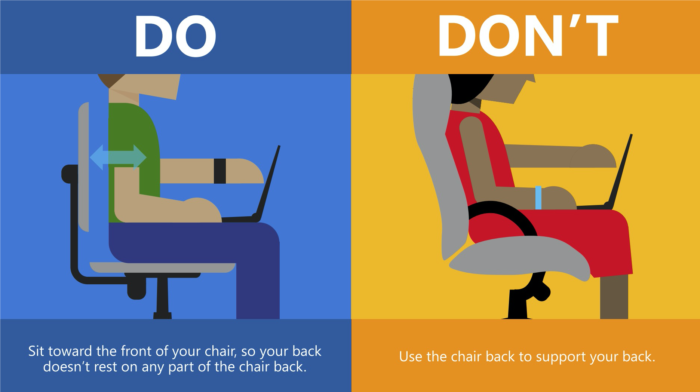
3. Do sit up. Don’t slouch.
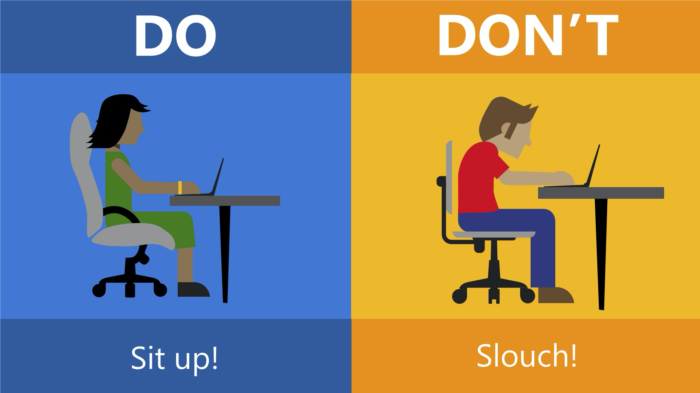
4. Do hold your phone or tablet directly in front of your face when using it. Don’t hold your phone below eye level and tilt your head forward.
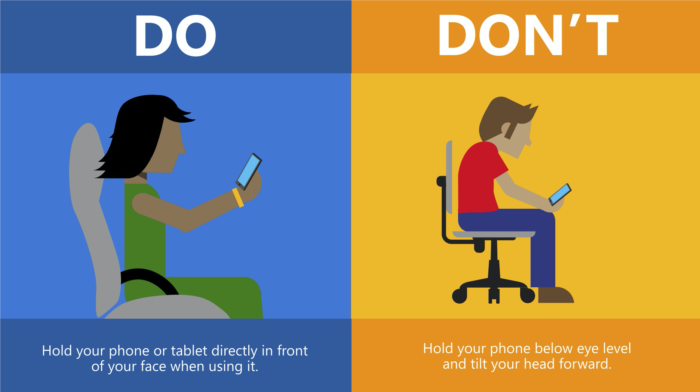
5. Do check your posture and position every 20 minutes, and readjust or move around. Don’t feel bad if you assume bad posture after being at your desk a while.
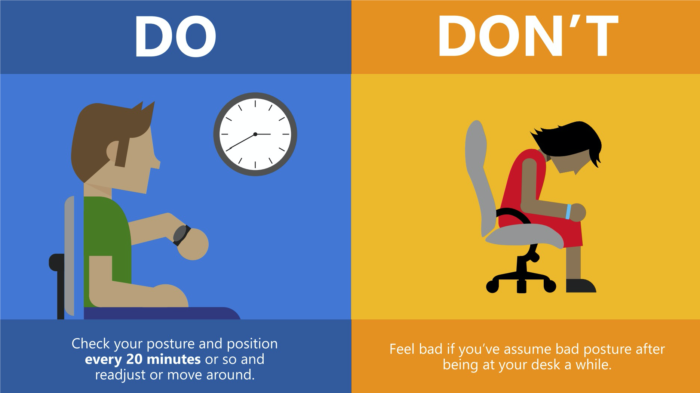
We’ve talked a lot about avoiding neck and back pain, but we’ve yet to discuss preventing eye strain. Since you’ll be in front of screens far more often under quarantine, following these guidelines is essential.
- Put bright lights to the side of monitors to avoid glare.
- Use indirect lighting to avoid eye strain.
- Opt for yellow-tinted lights versus fluorescents.
- Provide glare filters, light filters and ancillary task lights.
- Don’t put bright light directly above workstations.
- Avoid creating excessive contrast between the task and the background.
- Don’t create an atmosphere that is too bright or too dim.
- Make sure not to position monitors near windows that can cause glare.
Creating a Healthy Home Routine
First, you want to create a dedicated workspace separate from the rest of your home so you can focus. Here’s where you can get creative. Prop your laptop up on a stack of books or even a shoebox. Put a pillow behind your back to provide support.

Next, you’ll want to set the mood. Play some tunes or tune into talk radio or a podcast. Studies show that ambient noise is conducive to creative cognition. Remember this should be light background noise. You shouldn’t spend all day playing DJ and jamming out. And stay away from the TV — it’s too distracting!
Of course, all this is building toward creating a healthy routine in these chaotic times. If life during COVID-19 is making you feel disoriented and anxious, steer toward what’s familiar. It’s all too easy to slip into unhealthy habits while working from home. That’s why it’s vital to maintain some semblance of your old routine. Wake up with a warm cup of Joe. Then take a shower and get dressed. Don’t let pajamas become your work attire; wearing business casual clothes will give you a stronger sense of normalcy.
A New Normal
Maintain normal work hours. There’s no reason to burn the midnight oil. Be sure to take breaks, maybe 5 to 17-minute breaks for every hour worked. Research shows the most productive people work 52 minutes, then disengage for 17 minutes. During these breaks, you can clean up around your home, take a stroll or treat yourself to a Facetime call with a friend or family member.
Most importantly, keep calm and carry on. Maybe take PTO if you need some mental health days.
“COVID-19 has created a surreal new normal,” Norton said. “That’s why it’s essential for people to focus on what comforts them and provides physical and mental stability during this time of quarantining and working from home.”

Thanks for mentioning that it’s a good idea to alternate between a sitting and standing position when working for long hours. My workplace just recently implemented a work-from-home system so I would need to have a proper workspace in my house from now on. I hope I can find a service that can help me develop an ergonomic set up to avoid back problems.